National Geographic's new Year in Pictures special documents 2020: an 'unprecedented and unforgettable year'
This year, storied publication National Geographic has published its 'The Year in Pictures' campaign in print for the first time, showcasing powerful photographs from an "unprecedented and unforgettable year".
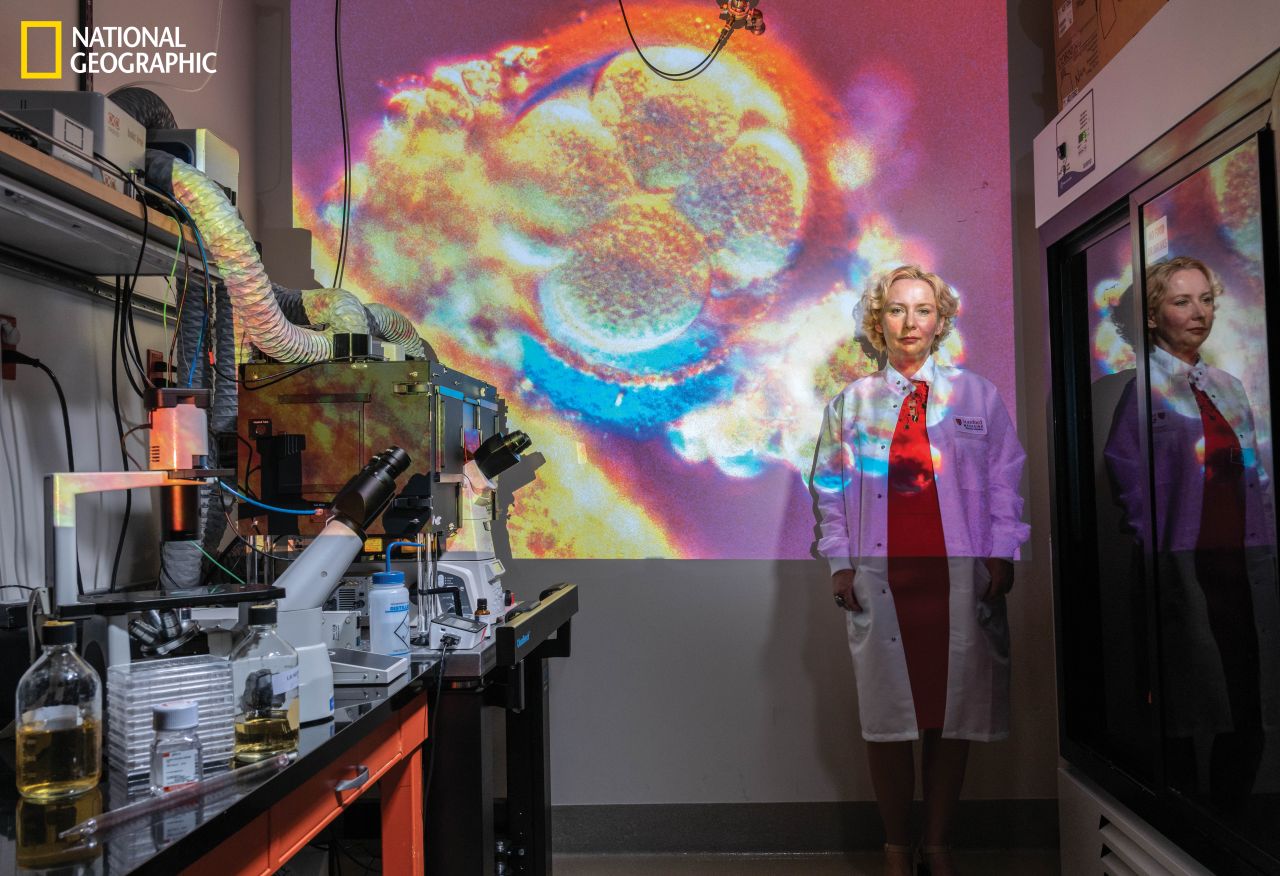
Not all viruses lead to global pandemics. Some have evolved to our benefit. An ancient virus called HERV-K may protect human embryos from other viruses, according to Joanna Wysocka, a professor of both chemical and systems biology and of developmental biology at Stanford University. When an embryo reaches the eight-cell stage (as projected at left), HERV-K is activated and may nudge the cells to build proteins that shield them from infection. It turns off when the embryo implants in the uterus. Ancient viruses make up nearly 8 percent of human DNA, with HERV-K joining an ancestor's genome more than 30 million years ago. Scientists like Wysocka are continuing to untangle how viruses have become a part of us. (Craig Cutler/National Geographic)
Well-known for its incredible use of photography, the mag's campaign aims to offer people a glimpse of 2020 though the unique lens of National Geographic in a new single-topic issue format.
The Year in Pictures publication forms the January issue and is split into four themes: the year that tested us, the year that isolated us, the year that empowered us and the year that hope endured. "The powerful photographs featured in the issue capture the year that shook the world to its core and shaped realities in ways that were previously unimagined," says National Geographic.
"In our 133 years, National Geographic has never singled out one year for a retrospective like this. But if ever a year demanded that, 2020 does," says National Geographic editor in chief, Susan Goldberg.
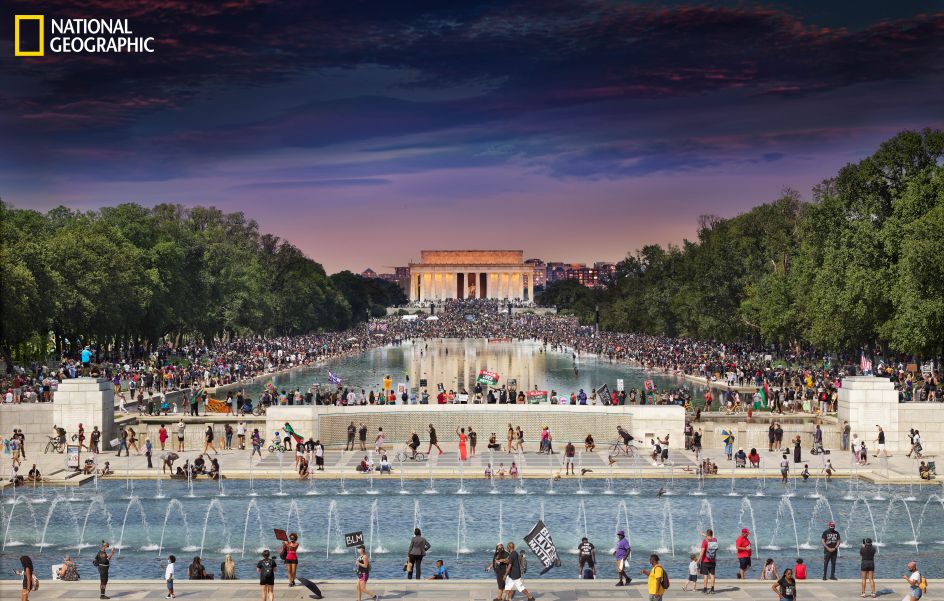
Fifty-seven years to the day after Martin Luther King, Jr., delivered his "I Have a Dream" speech in front of the Lincoln Memorial, another march for civil rights and social justice drew thousands of people to the National Mall in Washington, D.C. Organizers dubbed it the Commitment March: Get Your Knee Off Our Necks, a reference to George Floyd's May 25 killing. To capture this scene, Stephen Wilkes photographed from a single fixed camera position on an elevated crane, making images at intervals throughout a 16-hour period. He then edited the best moments and blended them seamlessly into one image. (Stephen Wilkes/National Geographic)
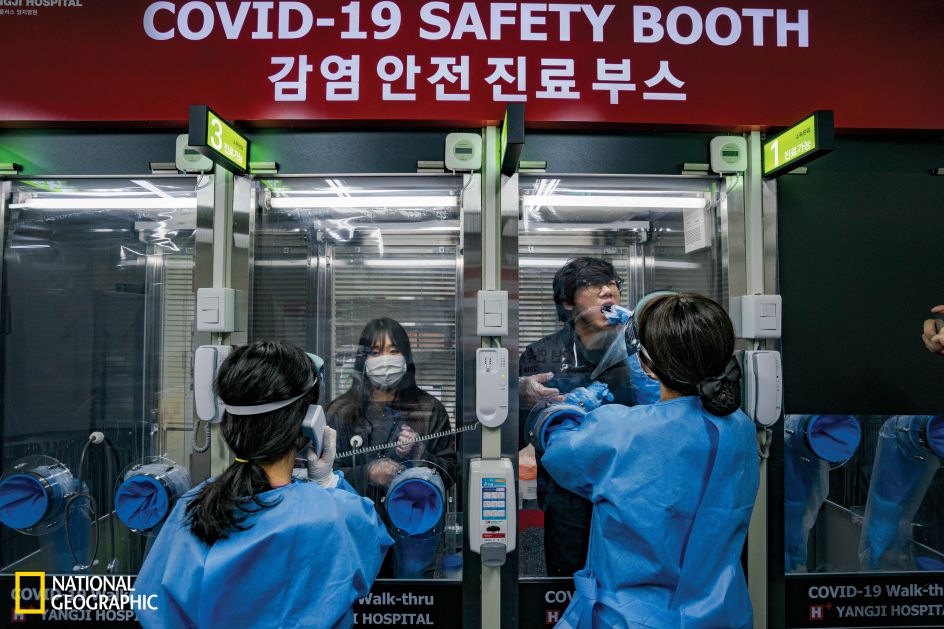
At the H Plus Yangji Hospital in Seoul, a walk-in testing clinic is set up like a row of phone booths to prevent contact between patients and medical staff. Nose and mouth swabs take less than three minutes, and test results can be returned in four to six hours. Experience with previous disease outbreaks prepared South Korea for the COVID-19 pandemic. The country already had a legal framework for contact tracing, and most residents stayed home and wore masks in public. The government worked with the private sector to swiftly ramp up testing. There are hundreds of testing sites throughout the country. (Jun Michael Park/National Geographic)
The issue is also housed as a unique digital hub that acts as a retrospective of the past year. Among the moments featured in the photographic special are the Commitment March in Washington, D.C. on 28 August, Covid-19 (obv), the death of Supreme Court Justice Ruth Bader Ginsburg, the US presidential election and more; captured by some of the world's most exciting photographers and photojournalists.
The January issue's Year in Pictures piece also features content including 2020's most notable "wildlife wins"; science, travel and animal photos, "amazing discoveries". There's also a section devoted to the best photos of the 21st century published in National Geographic over the last decade. "The campaign aims to convey a sense of hope for a brighter future amid a year that will never be forgotten," says the publication.
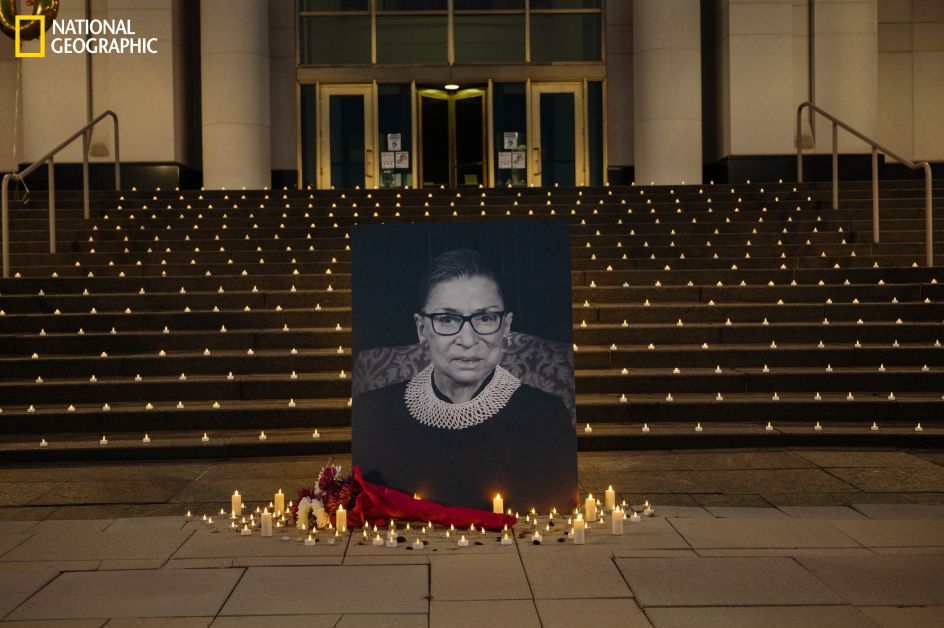
A memorial in Michigan was one of many nationwide honoring Supreme Court Justice Ruth Bader Ginsburg, who died at 87 on September 18. Ginsburg was a feminist trailblazer long before she was nominated to the high court in 1993 by then President Bill Clinton. She successfully worked on behalf of gender equality in a distinguished legal career. Her death led to a contentious pre-election scramble in the U.S. Senate over filling Ginsburg’s seat. Conservative judge Amy Coney Barrett was confirmed on October 26 as Ginsburg’s replacement. (Andrea Bruce)
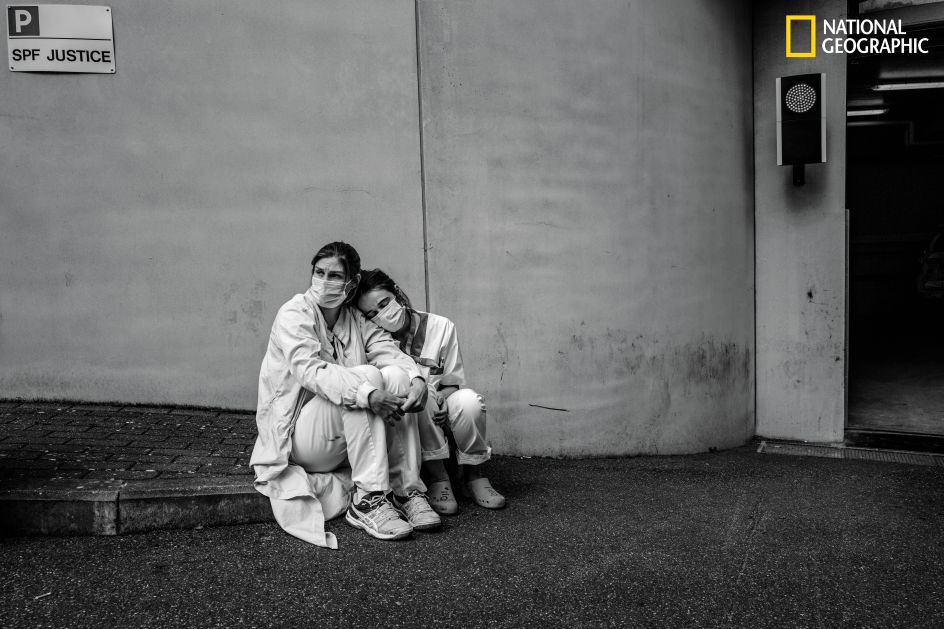
Taking a brief break during ceaseless frontline work treating patients with the coronavirus, nurses Caroline Quinet (at left) and Yasmina Cheroual rest outside CHU Ambroise Paré hospital. The pair, who had known each other for only a few months, pulled long shifts in the intensive care unit. Like many medical facilities around the world, Belgian hospitals initially were overwhelmed by a rush of patients with the virulent, ever changing new disease. These nurses, pulled from their standard duties, were thrown into full-time COVID-19 work—reinforcement troops for a long, exhausting battle. (Cédric Gerbehaye/National Geographic)
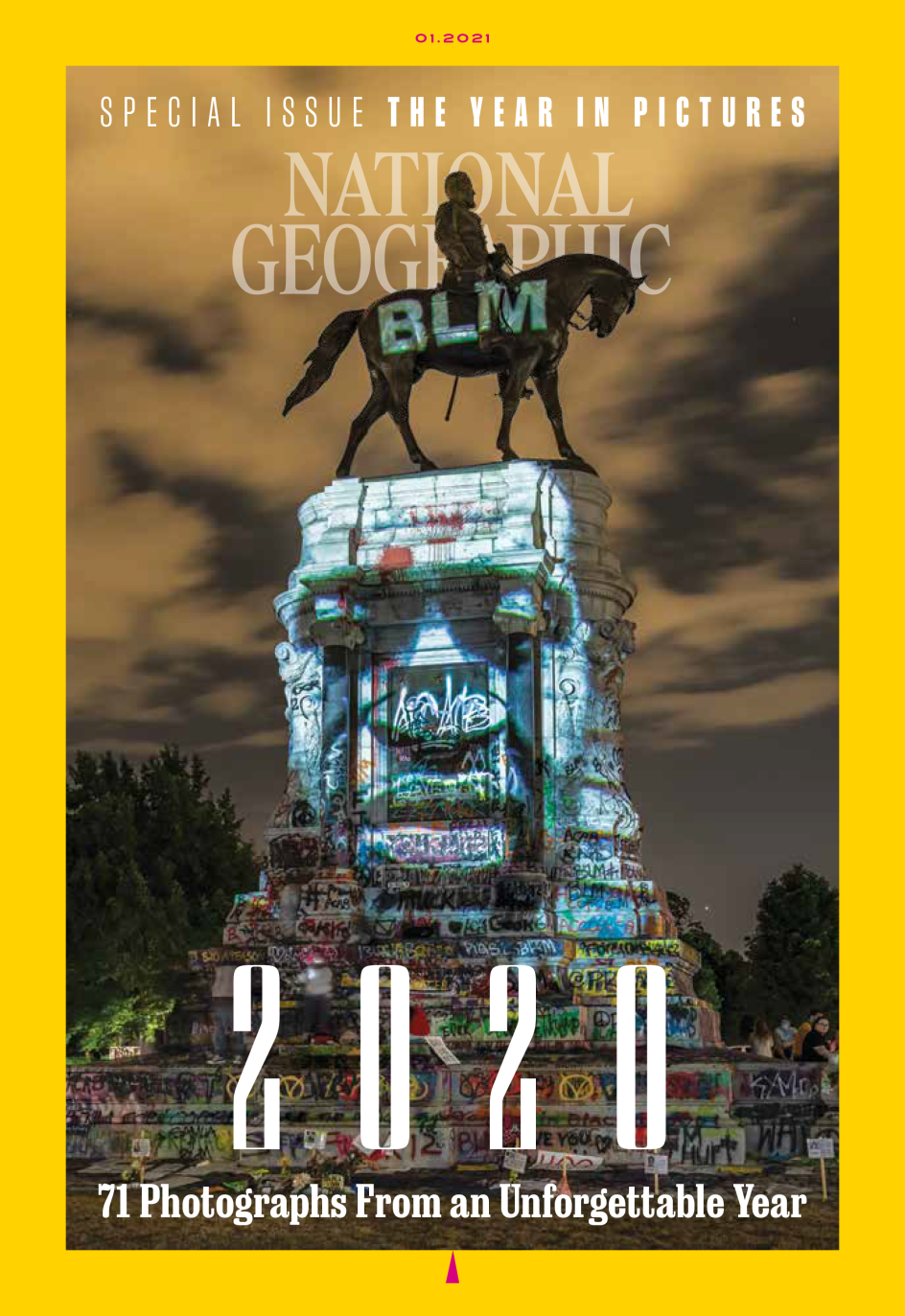
The statue of Robert E. Lee is transformed into a Black Lives Matter monument with a projection of George Floyd’s portrait. “It’s time for the healing to start,” tweeted Levar Stoney, Richmond’s mayor. “For public safety, for our history, for our future—the monuments to the Lost Cause are coming down.” Lawsuits attempted to block removal of the statue. (Kris Graves/National Geographic)
























